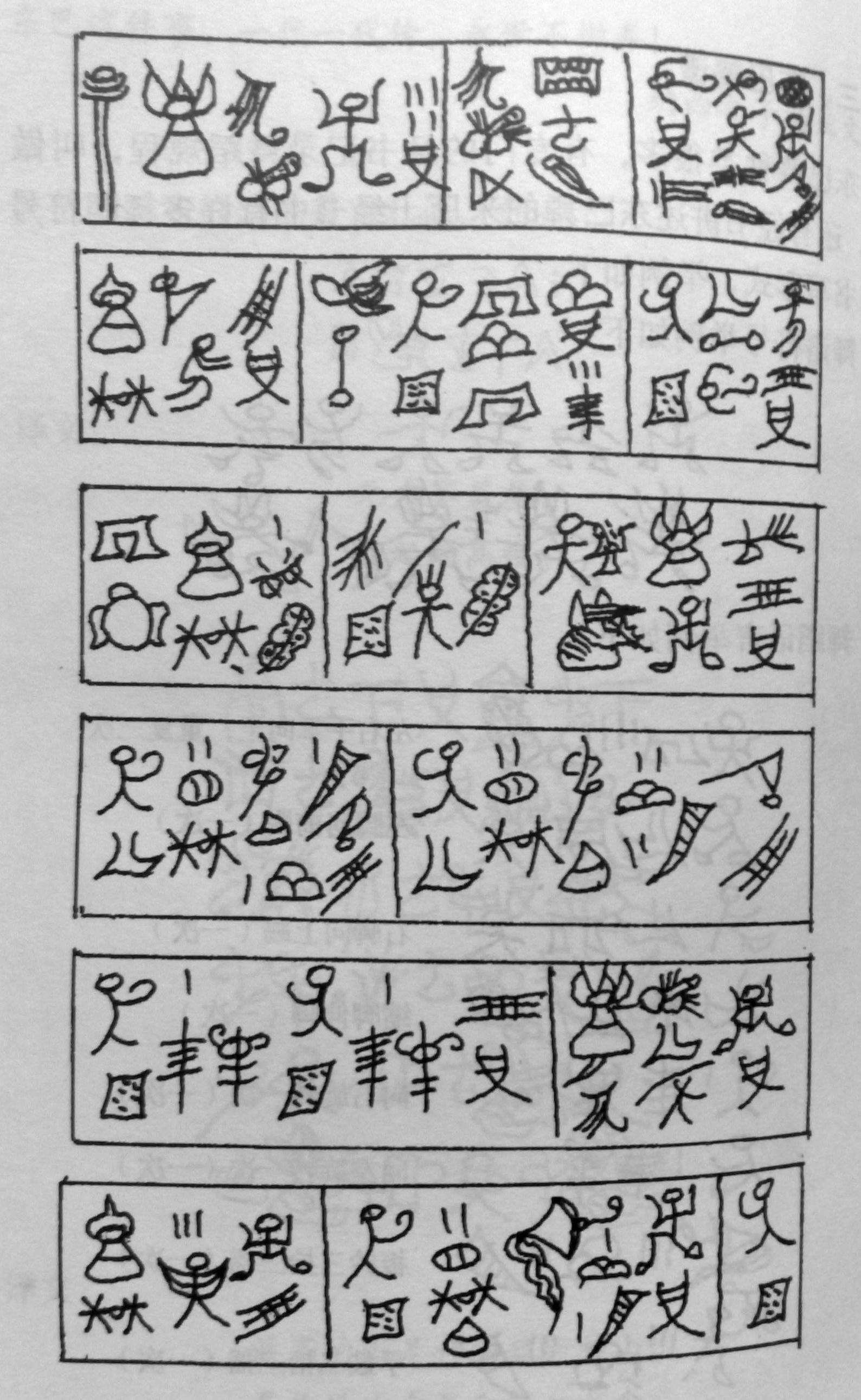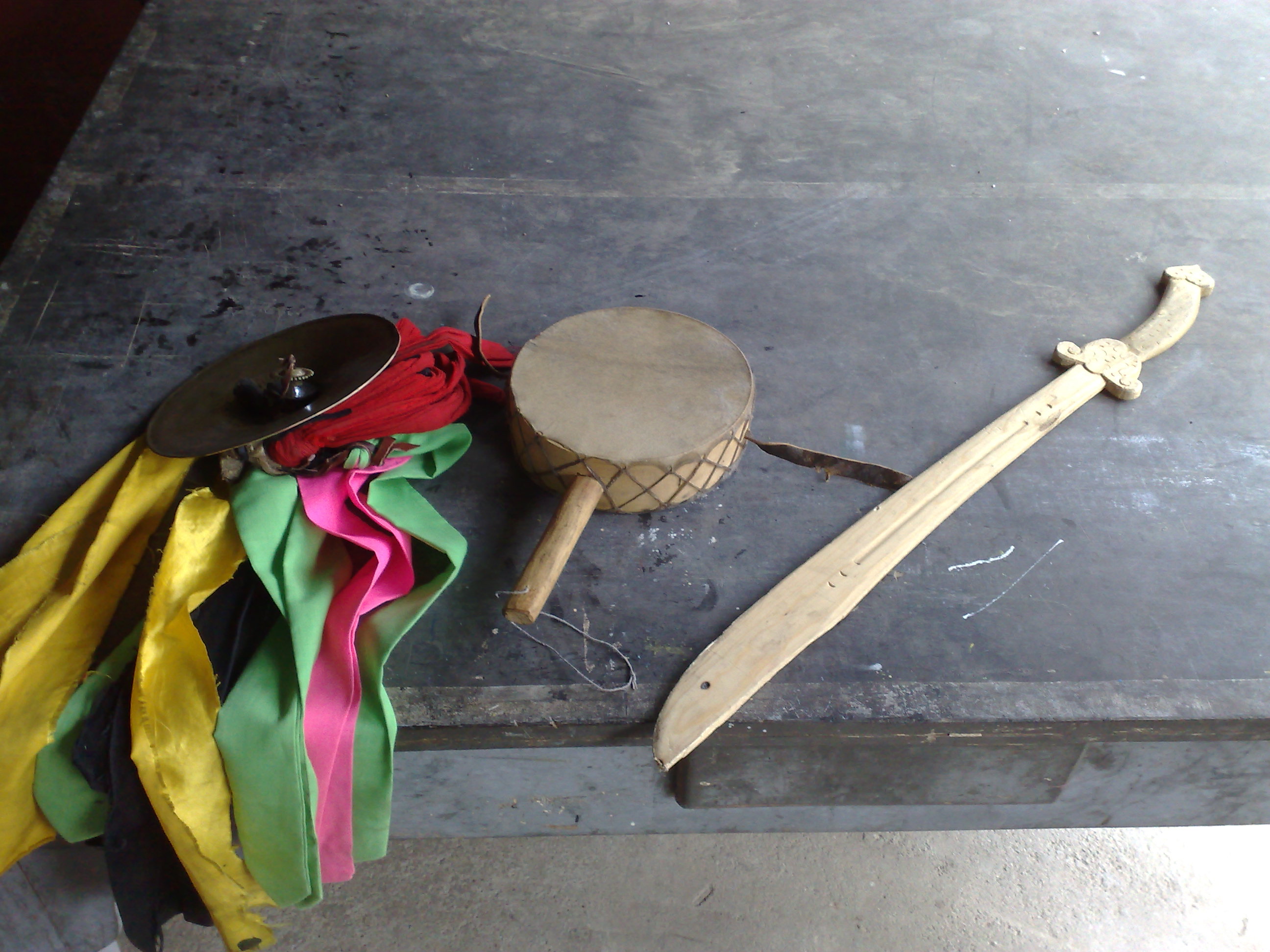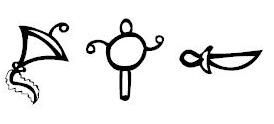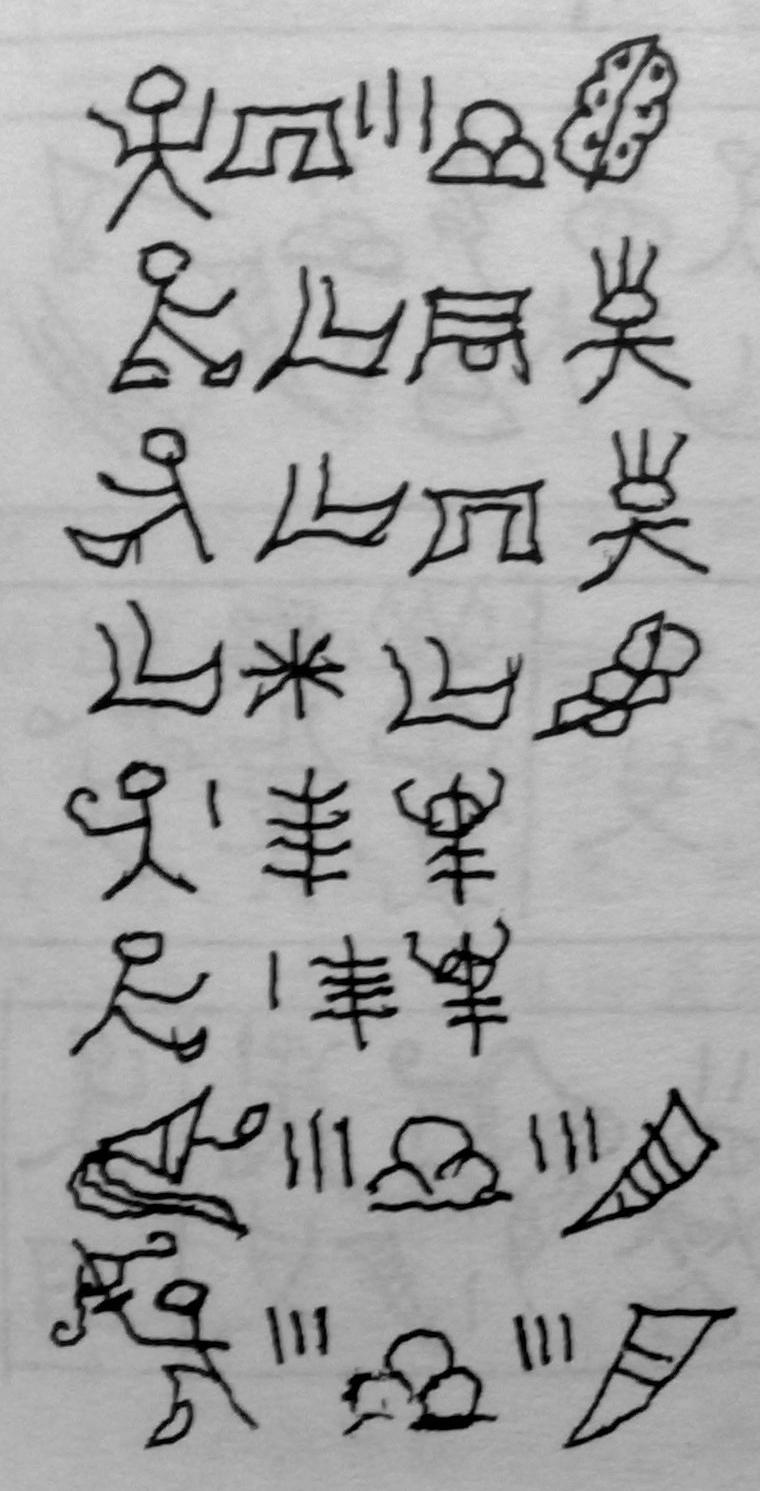The Naxi Dongba priests use dance as an integral part of their rituals. When they are called upon to help send a recently deceased soul on its long, arduous path to the afterlife, or exorcise a ghost, or indeed perform sacrifices to the Gods; ritual dance is invariably involved, alongside recitation of the relevant scriptures.
The dances are well recorded in the extant literature, and although regional variations exist in and around Lijiang and its environs, the dances are fairly standardised. The 100-volume collection of Naxi scriptures includes a number of instructional dance charts, but they are by no means comprehensive, and within a few generations many traditional dances will be lost – especially because very few young Dongba actively study the dances in any depth.
The tools used by the Dongba in the dance can be narrowed down to the following three: a bell, tsæ33 ɪæ21, that represents the sun, a hand drum, ta33 bər33 ɪər21 that represents the moon, and the knife, ʐər33. Note that what the Naxi call a knife – 刀 dao in Chinese – actually looks more like a scimitar to us, a curved sword. The Naxi ‘sword’ is straight, with no curvature. The wooden knife in the photo below is of course a practice weapon. For real ceremonies heavy iron weapons are used.
The bell is always held in the left hand, and depending on the dance, the right hand holds either the drum or the knife. The bell and/or drum are used to play out the rhythm of the dance in time with the footsteps, and thus scare off evil spirits or welcome beneficial ones.
These accoutrements are handily represented in the Dongba script:
I have provided below an example of how an instructional dance text may look. 
The dances themselves often enact legendary stories told in the scriptures, and the dongba must play the roles of the people and Gods involved, and more frequently the animals – tigers, horses, birds etc, reflecting a form of shamanist animism. Having studied the dance for a spell, I can attest that the movements are precise and physically demanding.
The following is an example of the kind of language used in the dance charts, taken from 杨正文 Yang Zhengwen, 东巴象形文字的应用 (纳西学论及) Dongba Xiangxing Wenzi de Yingyong (Naxixue Lunji). It is not a dance itself, simply example sentences! Note that ‘left’ is actually right as you look at it on the paper, but the left of the person portrayed in the character itself.
Frcom top to bottom, the eight lines mean:
1 the left and right palms point upward, (repeat three times)
2 the left foot kicks outward (once)
3 the right foot kicks upward (once)
4 withdraw the feet, extend the feet (once)
5 turn to the right (once)
6 turn to the left (once)
7 raise the bell thrice, shake the bell thrice
8 raise the drum thrice, shake the drum thricec




I just read the script book and find it very interesting.
I haven’t heard for this language until today. But I am wondering – does this book include all the available language symbols or just part of them.
I am trying to make a gift for my brother who is making 18 this month (becoming an adult). That’s why I decided to make him a symbol gift for life. It would contain 17 different messages for what life is and also an item to represent each message. For “Life is a promise”, I would like to make him a laminated sheet of paper in a frame, that would represent the word “promise” in different languages (mostly hieroglyphic and pictogramic ones – so that it looks more mysterious – the language/country would be stated below the word/phrase). So my question is – is there a pictogram in Naxi for “promise” or not?
Thank you in advance for your cooperation.
Maria: The word in Naxi for ‘promise’ is ɕy55; for which the character for ‘cypress tree’ is used as a phonetic loan character.
is used as a phonetic loan character.
Kellen: That’s a neat idea; but unfortunately I think the Dongba would take issue with a robot performing the dance, even for posterity’s sake – to do the dance you have to believe that you are calling on the Naxi Gods, and I had a difficult enough time persuading them my belief in symbolic realism was sufficient to let me learn the dance…
I recall seeing a video once of a Japanese robot that was specifically designed to learn and thus record traditional Japanese dances. Not that I think it would be easy to get a few shipped to Lijiang, but I’d love to see someone try.
I can understand that. I always found it a little odd when visiting Buddhist temples that the monk sitting there would tell me to bow in prayer. I was always like “but I’m a muslim?” which they’d wave off and then hand me incense anyway. Being bothered by a robot dancing seems much more in line with my idea of the devout.